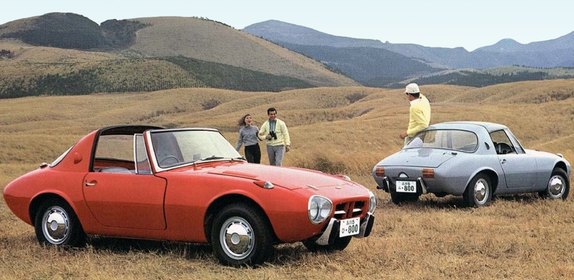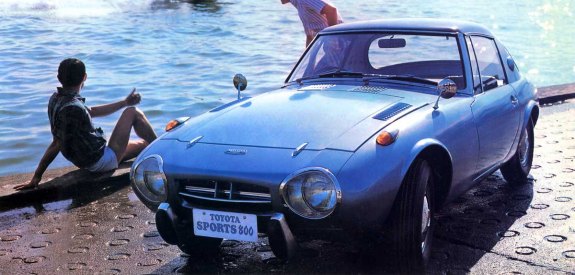 A trio of small sports cars
kickstarted the boom of Japanese motor industry. In 1963, Honda and
Nissan introduced S500 and
Fairlady 1500 respectively. Closely following them, Toyota produced
Sports 800 in 1965. All were designed with the intention to export to
the America. Whereas Honda and Nissan copied the format of British
roadsters, Toyota chose a streamline coupe style, thanks to the fact
that it was designed by a former aircraft engineer. Its headlamps had
glass shields to reduce air resistance. The wheels were covered by
smooth steel caps. The compact monocoque body was shaped like a cigar.
These gave the Sports 800 a higher top speed claimed at 96 mph even
though its engine was inferior to its rivals'. Moreover, the car had a
unique roof panel that could be detached and stored in the boot.
Ironically, Porsche claimed itself invented "Targa" top 2 years later.
 The weakest spot was its engine – an air-cooled 2-cylinder boxer displacing only 790 cc. While Honda employed four cylinders and twin overhead camshafts to compensate for lack of capacity, Toyota's lack of cylinder count and sophisticated valvetrain reflected in its modest output of 45 horsepower as well as the high level of engine noise and vibration. This made it difficult to compete with British roadsters in export market. After 3131 cars produced, it went into museum. Toyota would not revive its spirit until 20 years later with MR2. |